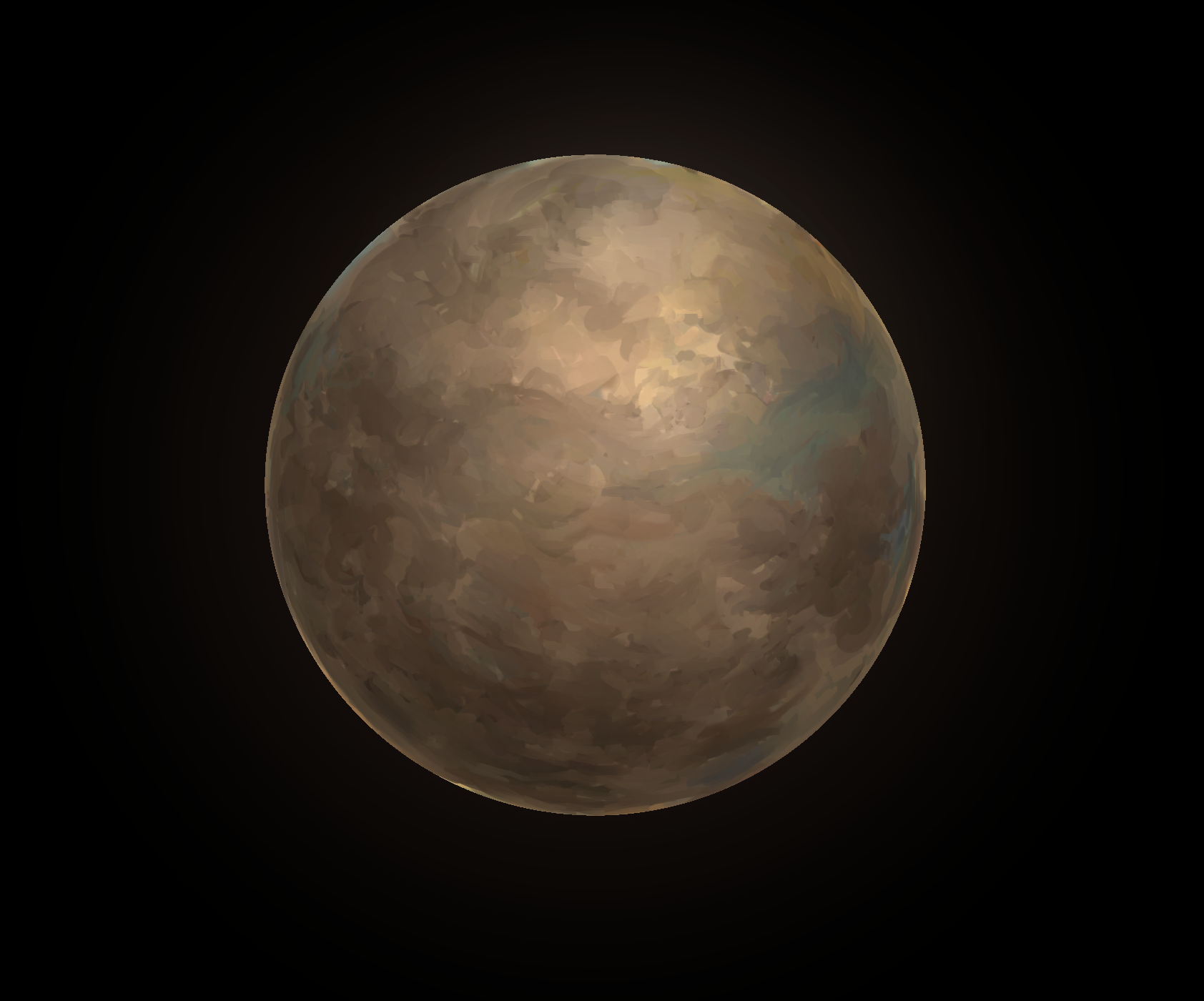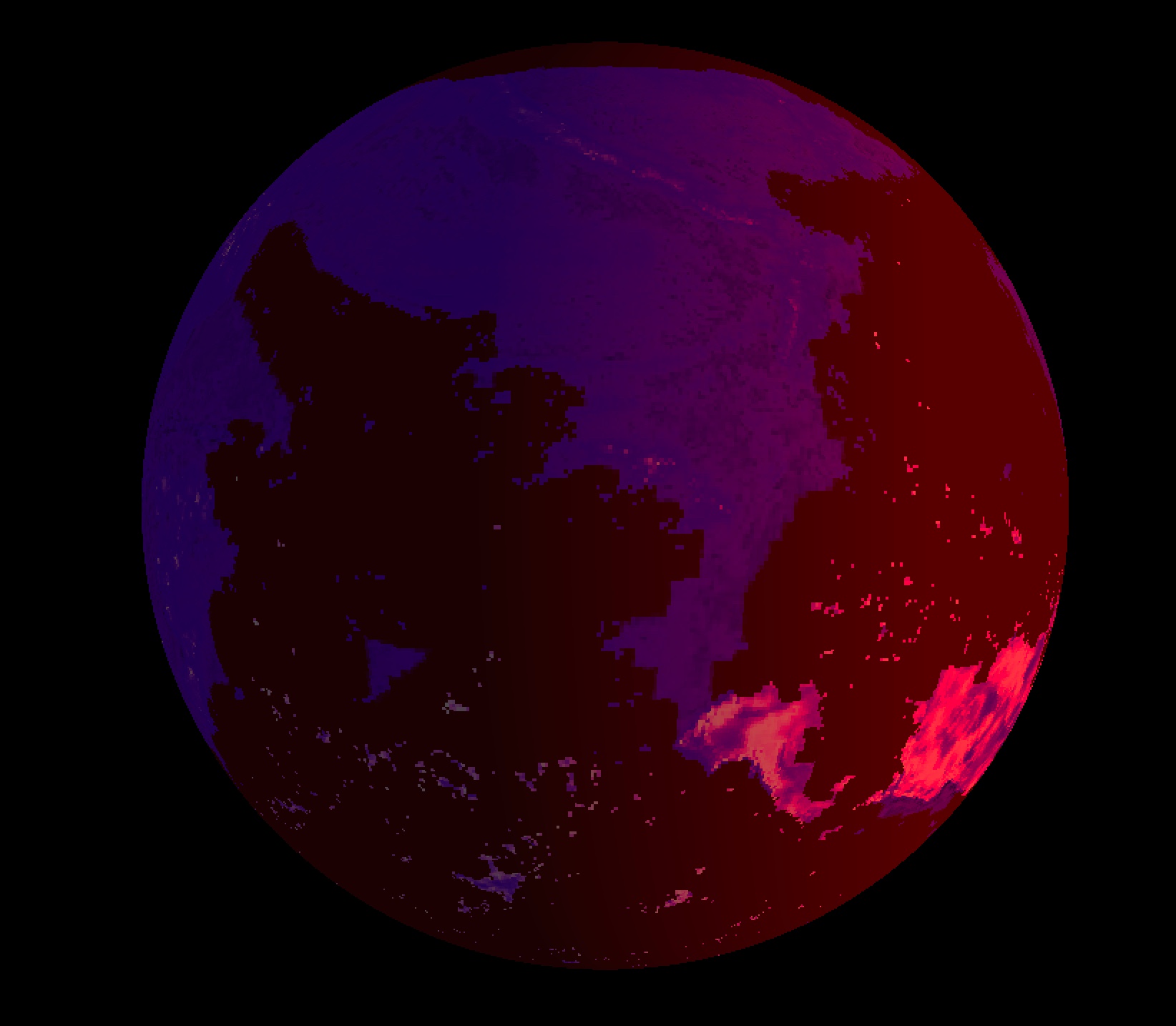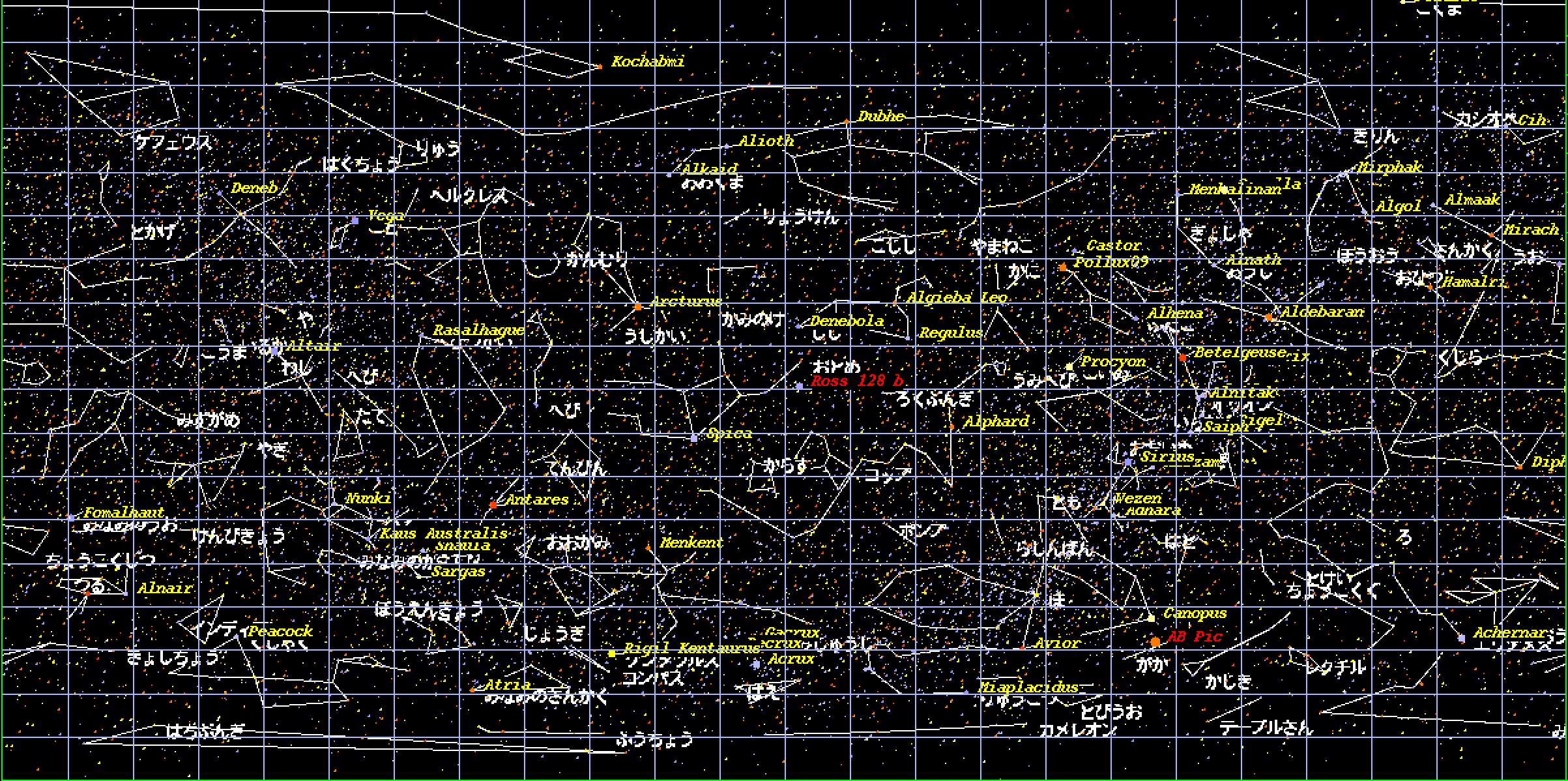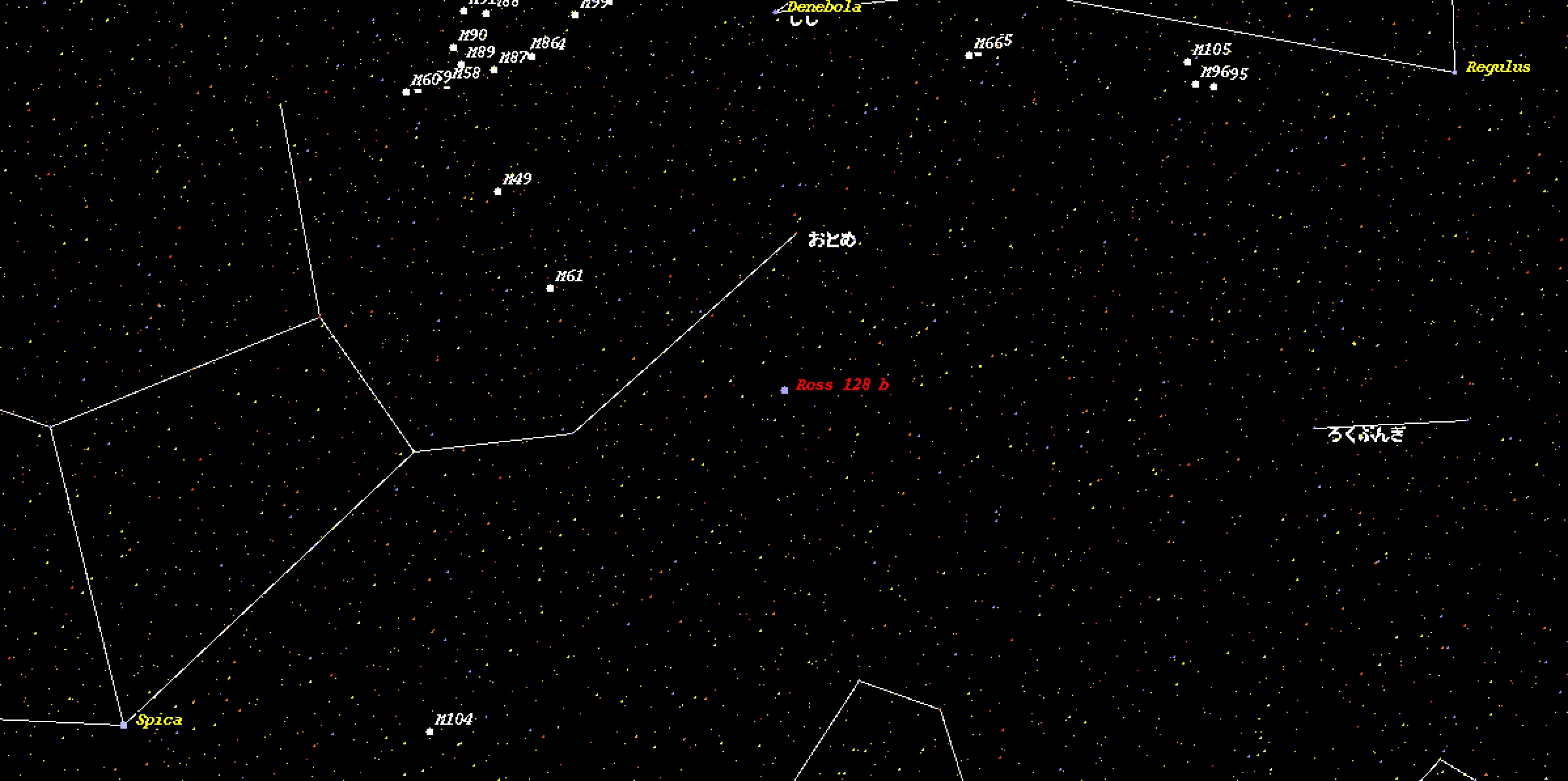
(Imaginary Image of Ross-128b Image Credit 清水海羽 守山高校ハビタブル研究会)

(Imaginary Image of Ross-128b Image Credit: Yosuke Yamashiki, Ryusuke Kuroki)
Ross-128b is a new habitable planet has been discovered, located about 11 light years (3.4 parsecs) away from our solar system. Its mass is about 1.35 times that of the Earth (ExoKyoto estimates 1.31), but the exact radius is not known because of a lack of transit. However, according to the mass estimation module (Weiss & Marcy, 2014) by ExoKyoto, the radius is estimated to be 1.078 times that of the Earth. The planet’s host star is Mare Virgo, which is a small M-type star in the constellation Virgo, with an estimated temperature of 3192 K and a mass 0.16 times that of our sun. It is the second closest habitable planet to Earth after Proxima Cen b. A research team from Université Grenoble Alpes in France made the discovery using a 3.6-meter diameter telescope at the European Southern Observatory (ESC) in Chile and the exoplanet survey instrument HARPS*. Ross-128b orbits the star Ross 128 in around 9.9 days per orbit and blackbody temperatures of the planet are 269 K for an Earth albedo (281 K for ExoKyoto) and 213 K for a Venus albedo according to Bonfils et al. 2017, which is classified as habitable (Earth’s blackbody temperature is 255 K).
The star Ross 128, is a red dwarf with a rotation estimated to be more than 120 days, which means that there is only moderate activity and it is unlikely to produce frequent superflares. Becaus eof this, depending on the state of the atmosphere of the planet, liquid water may exist and there is a possiblity it could support life.
A massive telescope scheduled for completion in 2024 called the ELT will begins its observations soon, and it this should be able to study the composition of the planet’s atmosphere to tell us more.
(坂東日菜・山敷庸亮)
For more information abour Ross-128b, please visit the ExoKyoto Database:
http://www.exoplanetkyoto.org/exohtml/Ross_128_bJP.html
X. Bonfils et al. 2017. A temperate exo-Earth around a quiet M dwarf at 3.4 parsecs. Astronomy & Astrophysics manuscript © ESO
Imaginary Image of Ross 128 b (Proxima Vir b) *With no tidal locking.
The Habitable Zone of Ross 128 b (Proxima Vir b)

The Habitable Zone Orbits of Ross 128 b (Proxima Vir b) (Kopparapu et al.)
According to ExoKyoto, Ross 128b is calculated to be slightly inside the habitable zone limits.

The Habitable Zone Orbits of Ross 128 b (Proxima Vir b) (Kopparapu et al.)
According to ExoKyoto, Ross 128b is calculated to be slightly inside the habitable zone limits.

Ross 128 b (Proxima Vir b) Size Comparison

Ross 128 b (Proxima Vir b) Stellar Window Location

Ross 128 b (Proxima Vir b) Stellar Window Location



